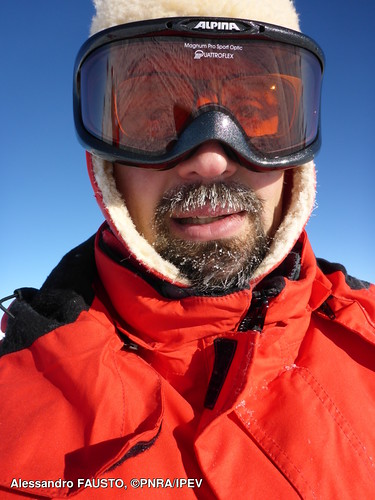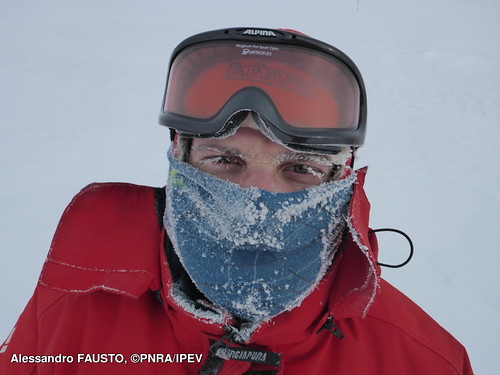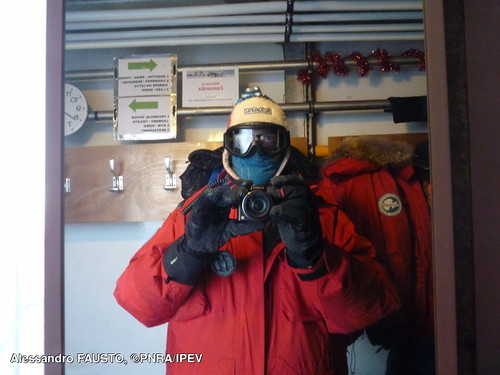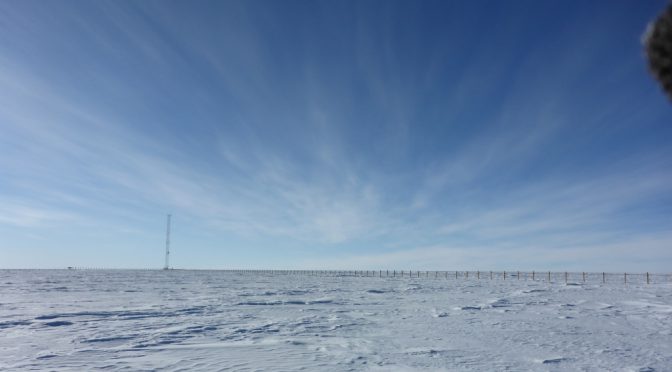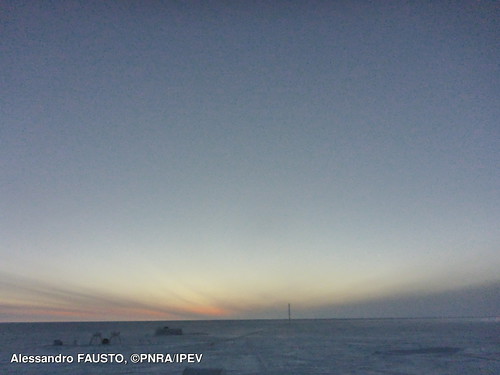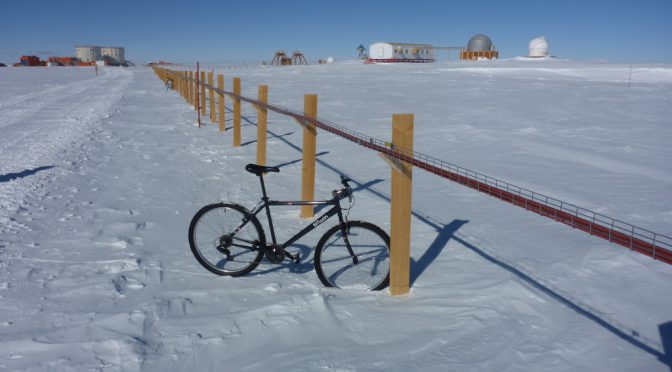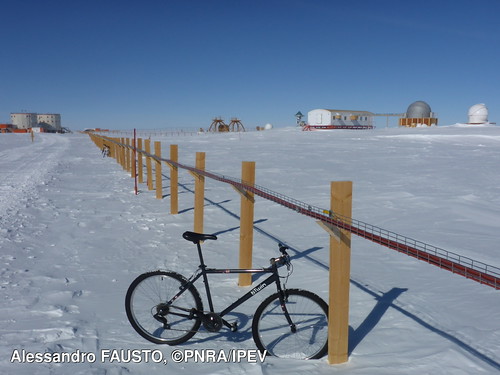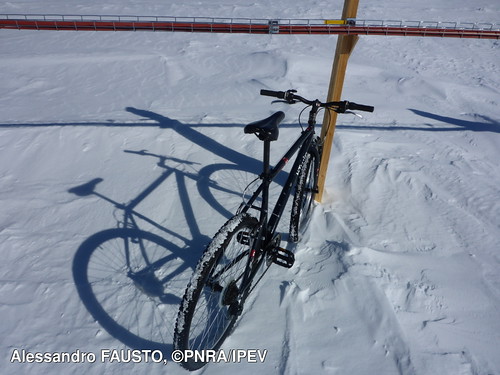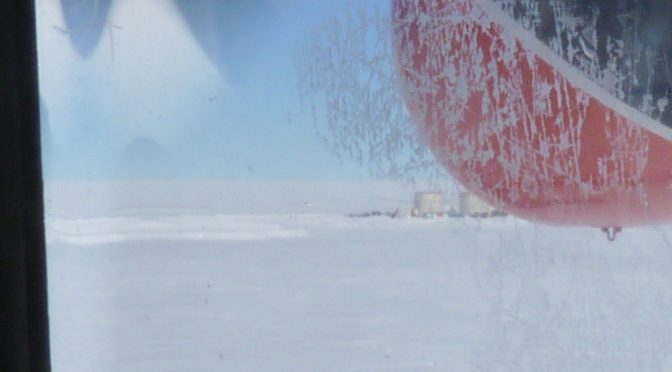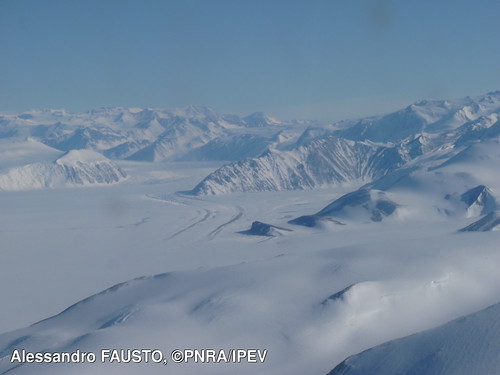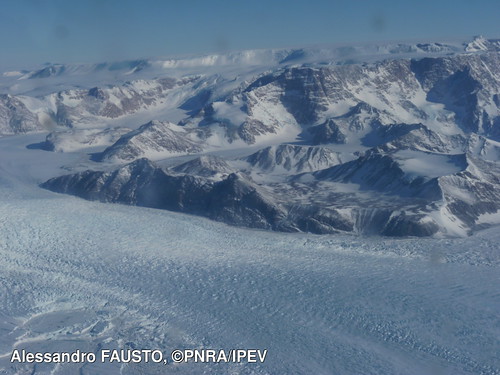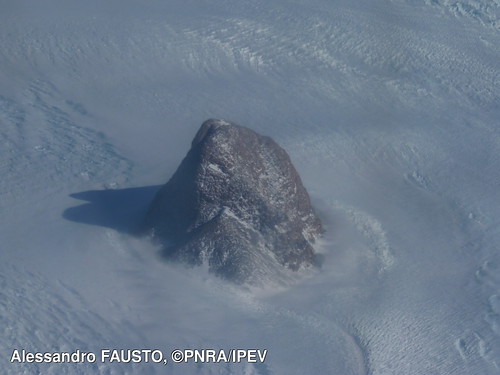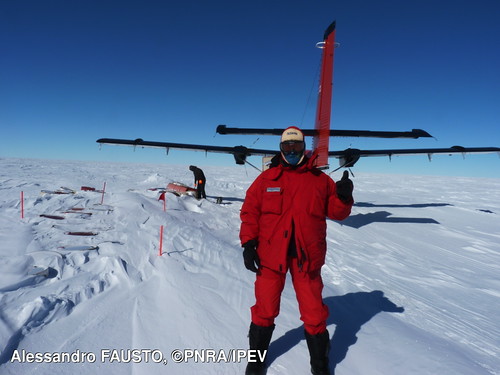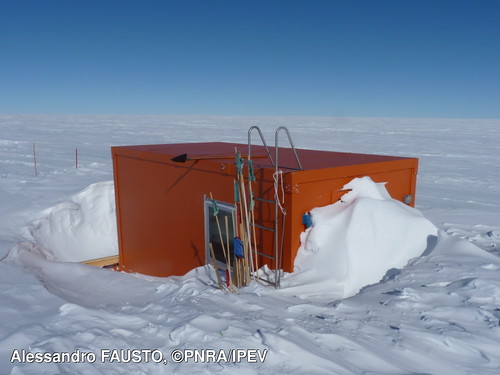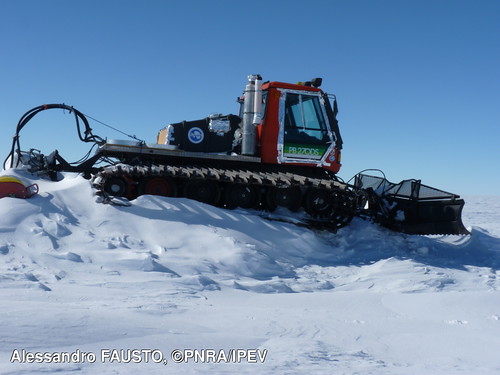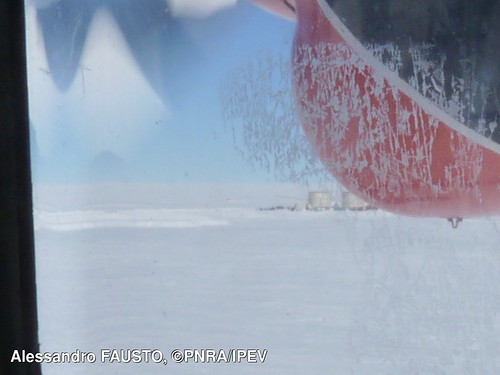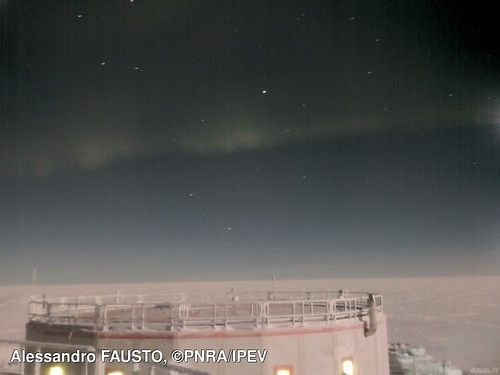The resistance against cold varies from person to person.
Each of us dresses in different ways to protect himself or herself from adverse external conditions. We are equipped with a summer suit and a much more padded one for winter, pile pants, a pair of pile sweaters of different thickness, long underwear and many socks.
Personally I didn’t change my way of dressing so much between summer and winter campaign. In summer I used my summer jacket and pants under which I wore pile pants, long underware, a polo shirt and a thick pile sweater. I used three layers of gloves: thin silk, pile and goretex.
Due to the strong brightness of the sun, I could not get out without a ski mask over my glasses.
At the lowering of temperatures I began to use a thin band in technical material to protect my mouth and face. I bought it with Barbara at Serravalle Scrivia outlet with a 20% discount. In Genoa’s shops the price was double.
With the arrival of winter and the drop in temperatures I merely added the balaclava provided by PRNA alternating it with a balaclava I purchased in Strasbourg. The first fully protects your nose but it causes the fogging of the mask. The second has a hole for nostrils but it exposes your nose tip to the outer cold.
The doctor confirmed that I have a good resistance against cold but, obviously, he advised me not to overdo because it takes a few minutes to risk frostbite. Being able to get out using the summer combination allows me to move with greater ease than my colleagues who use the winter combination. In fact, being much more padded, it tends to humper your movements and makes you a bit clumsy.
Strange to say, wind is the biggest problem, not the outside temperature.
Windless you can work at -60 °C without major problems thanks to technical clothing. But when a strong wind is blowing, the windchill effect comes into play and it becomes difficult to work. The wind whips our clothes cooling them and causing heat loss; the same happens to the skin parts that unfortunately we didn’t protect.
In a few minutes our skin surface changes from pink to red and finally to white, and the pain ceases because it is almost frozen. If you do not take immediate corrective action, the part quickly dies. You must simply return to a warm place or protect the exposed part to stop the cooling. However, in the following days it leaves a trace as a cold burn. At table we often see colleagues with small burns around their cheekbones, where the mask stands, or around their nose. Rarely on their fingers. I assure you that if you have cooled your hands too much, when the blood circulation comes back you will feel severe and lancinating pain. But if you cannot bring back the blood circulation you have a very big problem.


